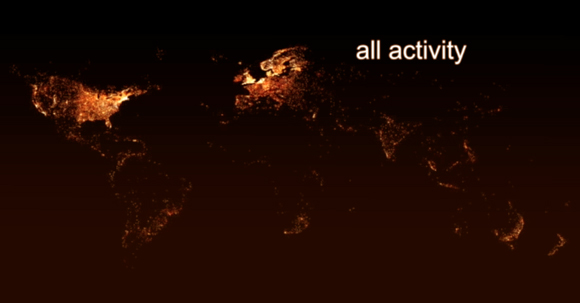An Israeli-American study, based on data from millions of social-network users, analyzed different age patterns of death, immigration, and marriage, extracting important information
Eighty-six million people, 5.3 million families, one of which includes no less than 13 million people related to one another by birth or marriage: a huge database made available by the internet and social networks. Now, researchers from the US and Israel are using it to study various phenomena, such as the heritability of life expectancy or patterns of immigration and marriage. The study unraveled the immense potential of what is termed “the digitization of mankind” for studies in various fields.
The data on all these people, living and deceased, were collected from the website Geni.com, which belongs to the Israeli company MyHeritage. The website enables users to enter their details, along with details on all known family members – when and where they were born, who they married, who were their children, when they died, and any additional information, along with pictures and documents. The website then runs a comparison of the details entered with profiles already in the database, thus allowing to reveal connections between different families.
The researchers created 5.3 million separate family trees for the 86 million available profiles, after filtering out a small number of trees that displayed impossible connections, like someone who was the father and son of the same person, or someone with more than three parents. The majority of the profiles in the study were from Europe and North America, and almost all from developed countries. The study was led by Joanna Kaplanis and Assaf Gordon from Yaniv Erlich's lab at Columbia University, the New York Genome Center and MyHeritage Ltd, in collaboration with Tal Shor from the Technion, Omer Weissbrod from the Weizmann Institute of Science, and others.

From western Europe to America and the rest of the world. The distribution of the study population | Source: MyHeritage, Columbia University
Some of the study’s findings confirmed data from previous studies, like those based on church documentation of births and deaths. Not surprisingly, a sharp increase in the mortality rates of young men was apparent during the American Civil War and World Wars I and II, as well as a decline in child mortality over the course of the 20th century.
Nevertheless, such a large database opens many more opportunities than previously possible using databases that include only hundreds or thousands of people, usually from a limited geographical location. To demonstrate this, the researchers used the information they had in order to examine the life expectancy of the people in the family trees, and its correlation with their parents’ life expectancy. This enabled the researchers to calculate the heritability of this trait, namely, what percentage of the variance among people can be accounted for by genes, compared to the environment. They concluded that the heritability of life expectancy is about 12%, and therefore most of the variation in life expectancy can be accounted to environmental factors, such as nutrition and lifestyle. This is slightly lower than what was found in previous studies, performed on smaller numbers of people.

Addressing questions in genetics, but also in anthropology, economics and public health issues, Yaniv Erlich | Photograph: MyHeritage
Not all in the Family
Since the data includes the places of birth of parents and their children, it could be utilized to examine patterns of human migration and immigration. For instance, the researchers found that women tended to leave their birth place more than men, but usually did not venture far. In contrast, when men migrated, they tended to move farther and immigrate from country to country. Thus, more fathers than mothers were born in a different country than their children. This trend has been ongoing at least for the last 300 years, and continues to this day.
One parameter that has changed quite a bit over the years is the average distance between birth places of two spouses. Before the industrial revolution, most couples were born less than ten kilometers away from each other; this distance has increased in the 19th century and early 20th century. Most people born circa 1950 married partners that were born in the range of 100 kilometers away from their birth place.
As people began searching for life partners in further places, the family relations between spouses also diminished – marriages between third- and fourth-degree cousins (or even closer cousins) became less common. Yet surprisingly, this was not always the case. The average distance between spouses born circa 1850 was twice the distance between those born fifty years earlier, probably due to changes in transportation that took place during those years. But the genetic distance between spouses actually decreased during that period – that is, the chances of people marrying relatives were higher. Only after 1850 did the geographical distance between husband and wife manifest also in genetic distance.
These results undermine the common notion that transportation and lifestyle changes of people in the 19th century, which brought them to increasingly farther places, are responsible for diminishing intra-family marriages. According to the study’s findings, several dozen years had passed between those changes and the sharp decline in genetic proximity between spouses, and it seems that cultural factors were predominant in this process.
The study demonstrates how the vast amount of information that people from all over the world share with each other on social networks can be used in research. The researchers also mentioned that in fields like genetics, anthropology, public health, and economics, many questions can be answered through a collaboration among millions of individuals. In-depth research of these questions was almost impossible until now, since they require an inconceivable amount of data. Now, for the first time, researchers have access to databases that can address this demand.
Watch this following video about the study, demonstrating the migration of the western population over hundreds of years:
Translated by Elee Shimshoni
